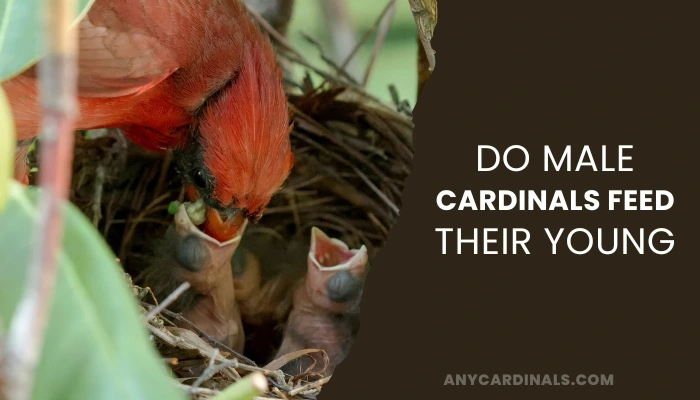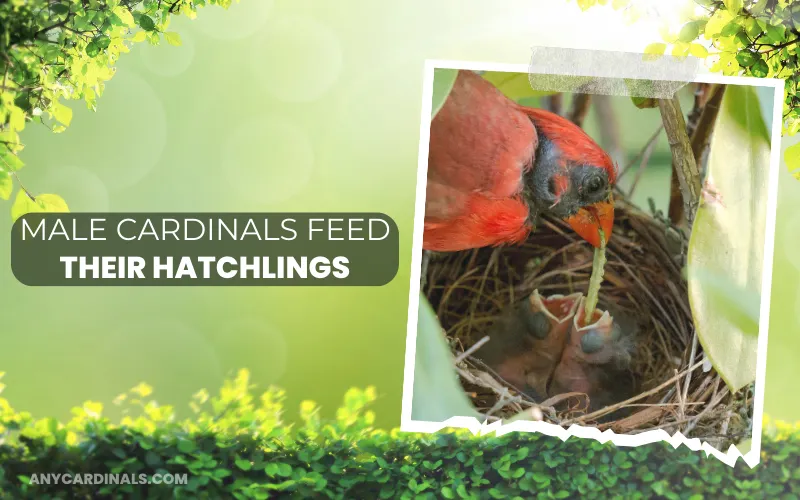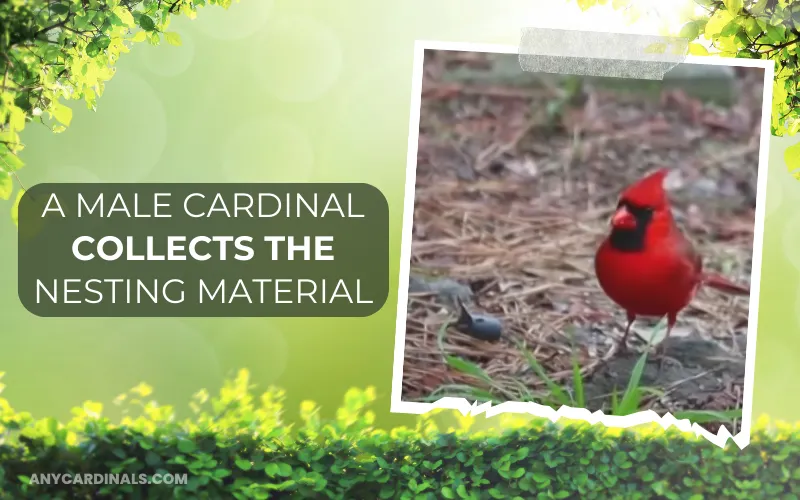Do Male Cardinals Feed Their Young?
Male cardinals possess peculiar yet noble behavioral traits; for example, they help their mates build nests, collect food, and support raising broods.
But do you know, “do male cardinals feed their young?” Yes, they feed their hatchlings like us humans. Male cardinals forage for food for the entire family. After bonding pairs, their primary duty remains to protect the family and keep the family members healthy and safe.
That stated, let’s learn about other facts regarding male cardinals and their offspring’s feeding attributes through this blog post.

Read related articles about cardinal food and diet:
Explore The Most-Asked Questions Related To Male Cardinal & Their Youngs’ Feeding Traits:
Below, we have answered some questions to help you gather more information on the above mentioned topic. So, let’s read.
What Do Male Cardinals Feed Their Hatchlings?
Primarily, they feed baby bird insects, mainly soft-bodied insects like caterpillars. These animals give those young birds the necessary protein and energy they need to thrive. Parent cardinals tend to feed their offspring until they age and become juvenile.

Do Male Cardinals Feed Other Baby Birds?
Yes, sometimes male cardinals feed other baby birds staying in different nests. They perform this job out of confusion; basically, they assume those birds are their hatchlings while feeding them.
After collecting food, when male cardinals fly towards their own home, they feed other birds’ offspring when those chicks beg for food. So, you can say cardinals are pretty altruistic, aren’t they?
What Time Of Year Are Baby Cardinals Born?
Baby cardinals are born between March & September. FYI, parent cardinals raise two broods each year, one at the beginning of March and the other in late May to July.

Do Male Cardinals Feed The Females Too?
Yes, male cardinals tend to feed females during the incubation period. At this time, female birds don’t move here and there and never leave their eggs; male cardinals arrange food for them and help them perform the incubating job comfortably.
Why Do Male Cardinals Feed Females?
The northern male cardinals feed females due to varied reasons. The most obvious one is related to their courtship behavior. Males need to prove that they can raise broods and protect the family.

So, male cardinals offer females food to tell them they will make perfect mates. You can say that’s how male cardinals flirt with females and convince them to copulate.
How Long Do Parent Cardinals Feed Their Young?
The incubation period of cardinal eggs typically remains between 11 to 13 days. After that, those eggs hatch, and hatchlings embrace the earth for the first time.
Those newborn birds are fed by both male and female cardinals for 25 to 56 consecutive days. Afterward, they become juveniles and can feed on food themselves.
What Other Responsibilities Do Male Cardinals Have As A Family Member?
Alongside feeding both female and baby cardinals, males have some other responsibilities to accomplish. Before the breeding season, they need to find and convince their mates and help them build appropriate nests for breeding.

Male cardinals collect the nesting materials, and females build the nests. Besides that, males protect the family from intruders and predators. In short, they play a significant role in protecting and feeding the other family members.
Do Cardinals Stay Together As Family?
Yes, cardinals stay together as a family. But they leave their babies when those birds age and learn to forage for food. Mostly, male and female cardinals stay together lifelong.
However, if one member of the pair dies, the rest will quickly search for a new mate and make bonding again.
Final Words:
Male cardinals need to undertake many responsibilities to ensure their family’s safety. They need to find the perfect mates, help their mates build nests, collect food for the entire family, and, more importantly, fight predators and patrol their nests.
Hence, they play a vital role in keeping the family members healthy, safe, and secure. These male cardinals’ duty is quite similar to us men. Anyway, that’s all for the content; we hope you enjoyed reading it and will stay connected with us as always on Twitter and Pinterest.

